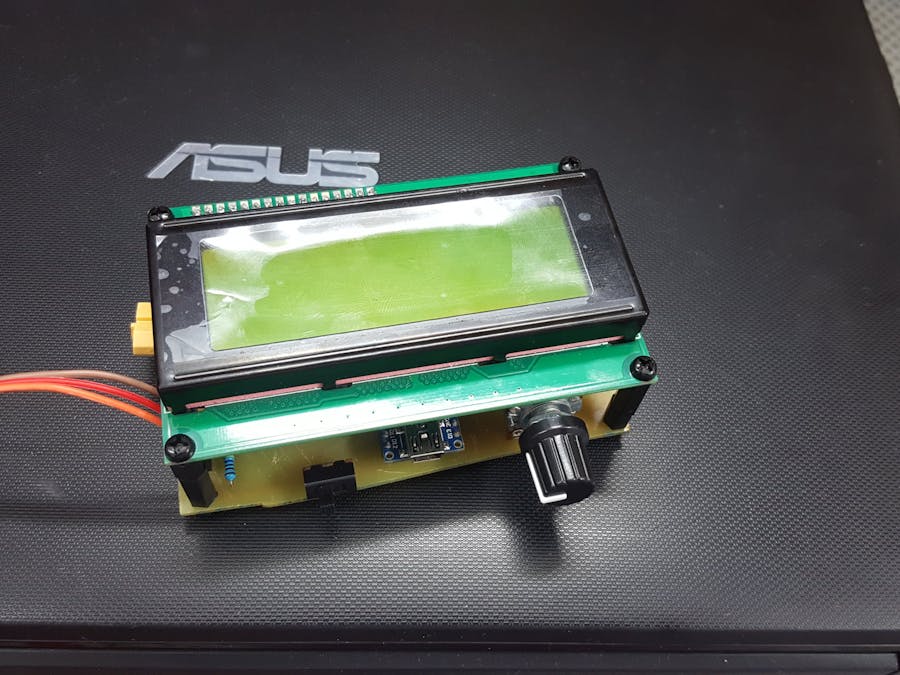While building a drone or an aircraft it is important to know the thrust of the combination motors plus ESCs. This do-it-yourself project not only show you on a LCD the thrust but also: voltage, current, watt, temperature, PWM, and more!
You just need to connect your lipo 3s or 4s to the XT60 connector, power it through the DC jack and connect your ECS. You could use it in "Manual Mode" where you directly command the pulse to your ESC or in "Auto Mode" where the PWM automatically increase until the maximum.
I decided to built it a long time ago but due to the lack of time I started working on it only a few days ago. This is my first homemade etched PCB so have mercy on me. I had to correct a few traces with the pen but it worked well at the end.
I bought everything from Aliexpress:
- Arduino nano ~1.40€
- ACS712 20/30A - current sensor ~1.10€
- Dallas 18b20 - temperature sensor ~ 0.50€
- 2x XT60 connectors ~0.40€
- Load cell 2Kg ~2.40€
- HX711 ~0.40€
- Potentiometer, resistors, dc plug - a few cents
So with only about 11€ you could built a complete Thrust Station. Professional product give you the same but at a price more than 10 times higher, see this article!
See it in actionHere there is a short video of it, I didn't run the motor at high speed since it wasn't well mounted on my bench vise but you could see it working:
ConclusionNow I am going to work on a Python interface to make nice looking charts of the thrust compared to the PWM, this is a first experiment:
In the attachments you will find all you need to build your own: arduino code, eagle schematic and board. Have a good built!
If you want to see other DIY project see:













Comments